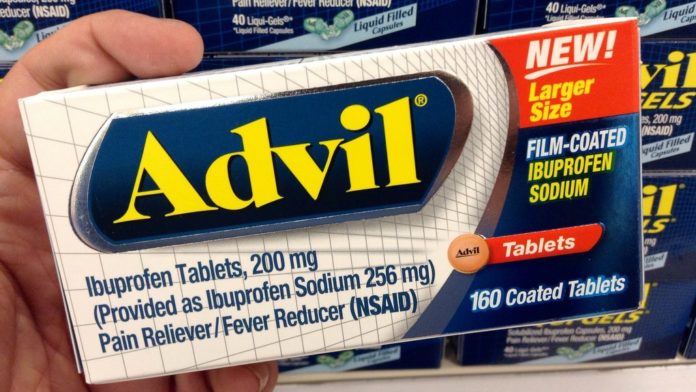An alternative to morphine for kids recovering from minor surgery may be just over the counter at the local pharmacy, according to a new study. In pediatric outpatient surgery – minor surgeries where patients do not require an overnight stay at the hospital – there is a need for a painkiller that does the job without going over the top.
Some 80% of pediatric surgeries fall under the category of outpatient surgery, making caregivers and parents primarily responsible for pain management. Morphine is strictly available on a prescription basis, and is time-consuming to purchase through a pharmacist.
There is a need for more accessible and easily-administered drug with minimal side-effects. Enter ibuprofen.
Top of the (drug) class
Ibuprofen is a non-steroidal anti-inflammatory drug (NSAID) and can be found in familiar pain relief drug brands like Advil and Motrin. It is considered to be the “most tolerated drug in its class” and was the first NSAID to be approved for over-the-counter use.
Codeine used to be recommended until a spate of child deaths drew a line in the sand, and while morphine gets the job done pain-wise, its side effects often make for a nasty experience.
Morphine and other opioids have well-documented side effects besides their potential for addiction, such as vomiting, nausea, drowsiness, constipation, sweatiness, and light-headedness. Ibuprofen can make you feel bloated, nauseous, or dizzy (among other side effects), but the crucial difference is that side effects are typically not as severe or as common as those of morphine, making it a far more attractive option.
Smoothing out the experience of hospitals, procedures, and recovery could also assist with decreasing the related anxiety and stress, which are highly correlated with post-operative pain.
Inadequate pain management with kids on the mend is a more acute issue than with adult patients. The young ones’ lower body weight and the difference in their metabolism mean they are more vulnerable to sleep disturbances, behavioural changes, and vomiting.
Potluck painkiller
For the sake of consistency and to avoid bias, all 155 participants (aged between 5 and 17) were blinded as to which painkiller they received. Each dose was contained in an individual packet that included two vials – one live dose of either morphine (0.5 mg/kg) or ibuprofen (10 mg/kg) and a placebo of the other. The dummy drug had the same taste, colour, and consistency of its active counterpart to ensure participants could not tell which drug they were using.
Researchers directed parents and caregivers to provide eight doses in total – once every six hours – and to use the Faces Pain Scale to keep a record of pain levels throughout the experiment period.
The study found no evidence to suggest that either oral morphine or ibuprofen was a more effective painkiller after pediatric outpatient surgery, leaving only adverse effects to consider.
“Oral morphine was associated with significantly more adverse effects (69% versus 39%), which suggests that ibuprofen is a safer first-line analgesic,” say the authors.
Given these results, ibuprofen seems like it could be a viable alternative, but nonetheless, always listen to your doctor. While this sounds promising, doctors are trained and educated on how to make the right call. Fingers crossed we can soon cut down on the morphine-induced vomiting and headaches via good old Advil – further research will tell.








































